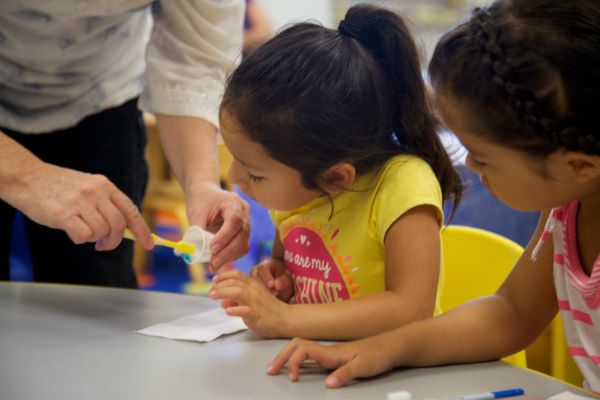 School readiness begins with health because a child must be healthy to be ready to learn. School readiness depends on positive physical, social and emotional, learning, language, and cognitive development. Oral health impacts each of these areas and plays an important role in a child’s school readiness.
School readiness begins with health because a child must be healthy to be ready to learn. School readiness depends on positive physical, social and emotional, learning, language, and cognitive development. Oral health impacts each of these areas and plays an important role in a child’s school readiness.
This Brush Up on Oral Health tip sheet describes the impact of oral health on a child’s ability to learn. It includes strategies and resources Head Start staff can use to promote oral health among parents and in the classroom.
The Impact of Oral Health on School Readiness
The health of a child’s mouth can affect all aspects of a child’s life. Children with poor oral health may:
- Have a hard time concentrating and learning because they are in pain
- Miss more school days
- Develop other serious health conditions, such as infections
- Stop smiling, cover their mouth with their hands when they speak, or withdraw from family, friends, and teachers if others comment on the appearance of their teeth
The good news is that tooth decay can be prevented. Ingredients of good oral health include brushing with fluoride toothpaste twice a day and visiting the dental office regularly. Eating healthy meals and snacks and drinking water containing fluoride are also important for good oral health.
Resources Head Start Staff Can Use to Promote Oral Health
 The National Center on Early Childhood Health and Wellness provides a variety of resources that can be used to promote oral health among parents and in the classroom:
The National Center on Early Childhood Health and Wellness provides a variety of resources that can be used to promote oral health among parents and in the classroom:
- Checklist for Child Care Staff: Best Practices for Good Oral Health is a checklist with items that Head Start and child care program staff can check to show what they are doing to promote good oral health for infants, toddlers, and young children. Items not checked can serve as goals to help staff work toward improving their practices related to foods and drinks and oral hygiene. The checklist is divided into three main categories: infants from birth to age 1, toddlers ages 1–3, and young children ages 3–5. Within each category, items to check are listed in two sub-categories: foods and drinks and oral hygiene.
- Healthy Children Are Ready to Learn offers information that connects school readiness to health and healthy development.
- Healthy Habits for Happy Smiles is a series of handouts for pregnant women and parents that provide simple tips on oral health issues. Topics include teething pain, toothbrushing, healthy drinks and snacks, fluoride, oral injuries, and dental visits.
- Steps for Toothbrushing at the Table: Growing Healthy Smiles in Early Care and Education Programs is a video that provides Head Start and child care staff with information about how children can brush their teeth as a group at the table. The video shows a Head Start teacher modeling brushing at the table while the children also brush with her guidance. Instructions for how to prepare the area, clean up after brushing, and safely store toothbrushes are included. The video also shows a dentist explaining how toothbrushing with fluoride toothpaste can help prevent tooth decay.
Download a PDF version to print and share.
Read more:
Resource Type: Article
National Centers: Health, Behavioral Health, and Safety
Audience: Teachers and Caregivers
Series: Brush Up on Oral Health (BUOH)
Last Updated: April 24, 2024
